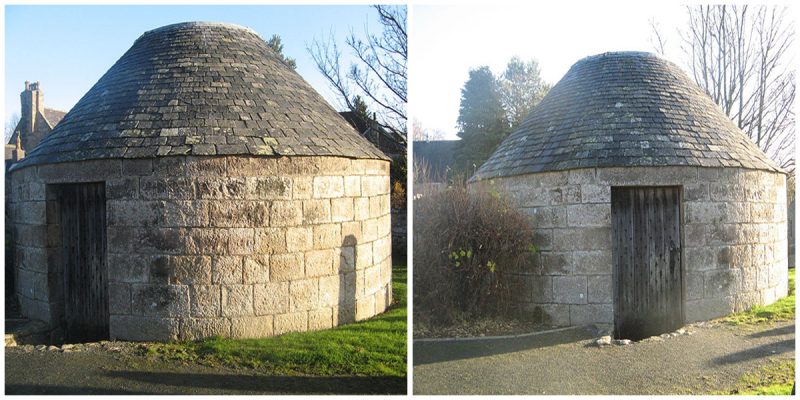Located at Udny Green, Aberdeenshire, north-east Scotland, the mort house is a small round building, constructed with rough ashlar granite blocks and a conical slate roof.
Grave-robbing was a quite common practice throughout Scotland in the 18th and 19th century, so precautions and various methods were provided for protection of the bodies and the graves.
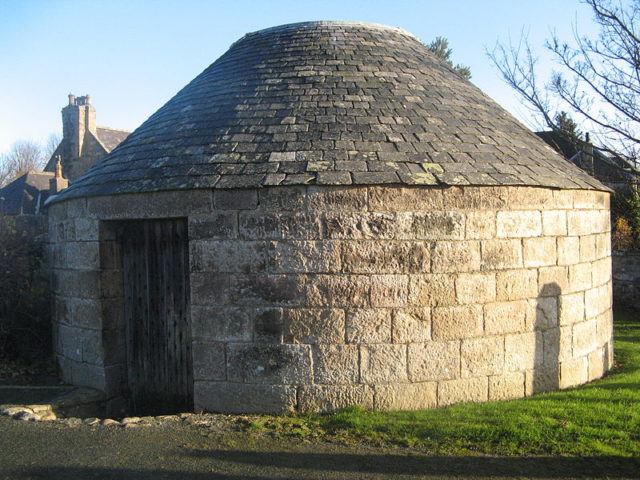
Designed by John Marr of Carinbrogie and built by Alexander Wallace of Smiddyhill and Thomas Smith of Oldmeldrum in 1832, it is a structure used to safely house bodies awaiting burial and protect them from the so-called ‘body snatchers’ who were common in Edinburgh and in some parts of Aberdeenshire in the early to mid 19th century.
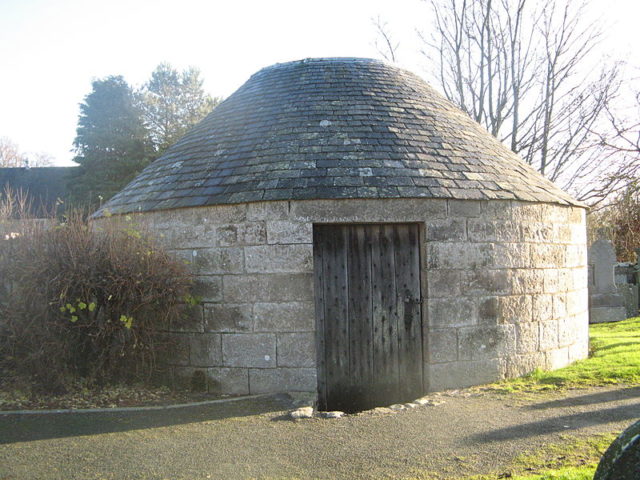
It was a windowless, granite chamber with a strong oak door and a lock requiring four separate key holders, as well as an inner iron door for further security. Three feet above the inside floor was a revolving circular oak platform on which the coffins were placed.
Bodies were kept on the turntable and each was placed by the time of passing. They were kept at least for 7 days or up to three months. The building was built facing the east of the original parish church of which no remains are found today.
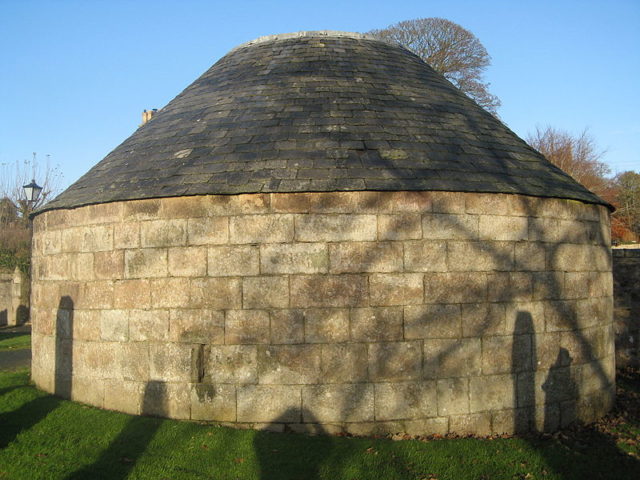
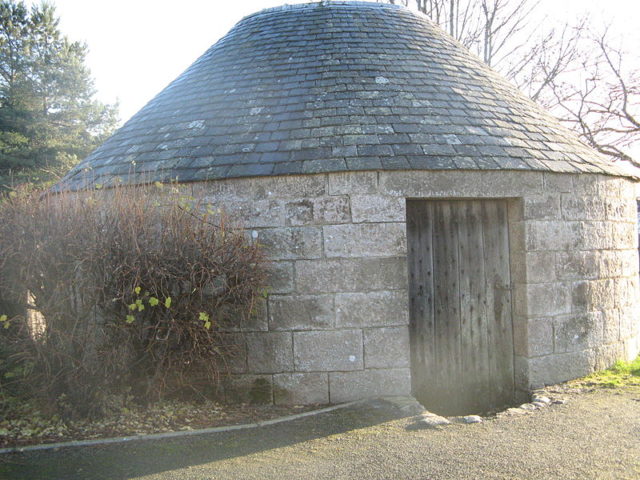
Unfortunately, that same year the Anatomy Act came into force. Grave-robbing effectively ended, so the mort house was almost immediately obsolete.
The act gave physicians, surgeons, and students legal access to corpses that were unclaimed after death. Further, medical schools were effectively provided with large number of corpses for teaching purposes.
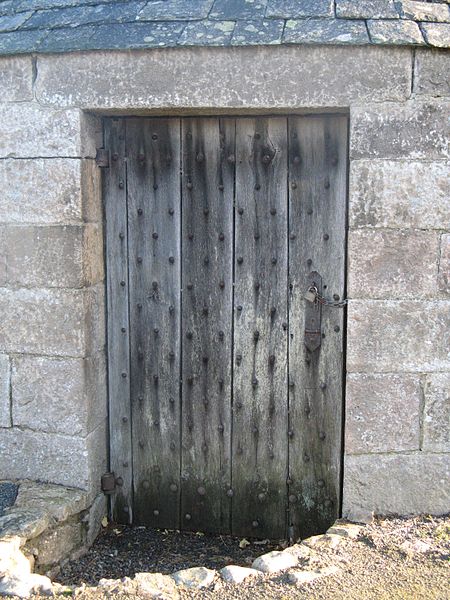
The house was used as an ammunition store in WW2 and today is regarded as a “rare, significant structure” by the Scottish Church Heritage Research.
